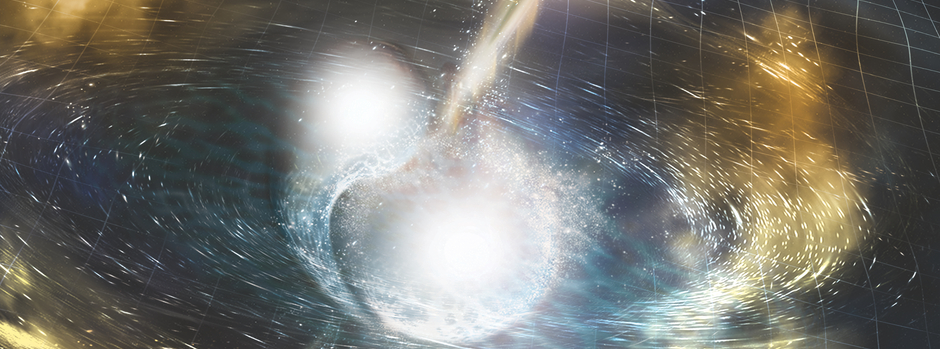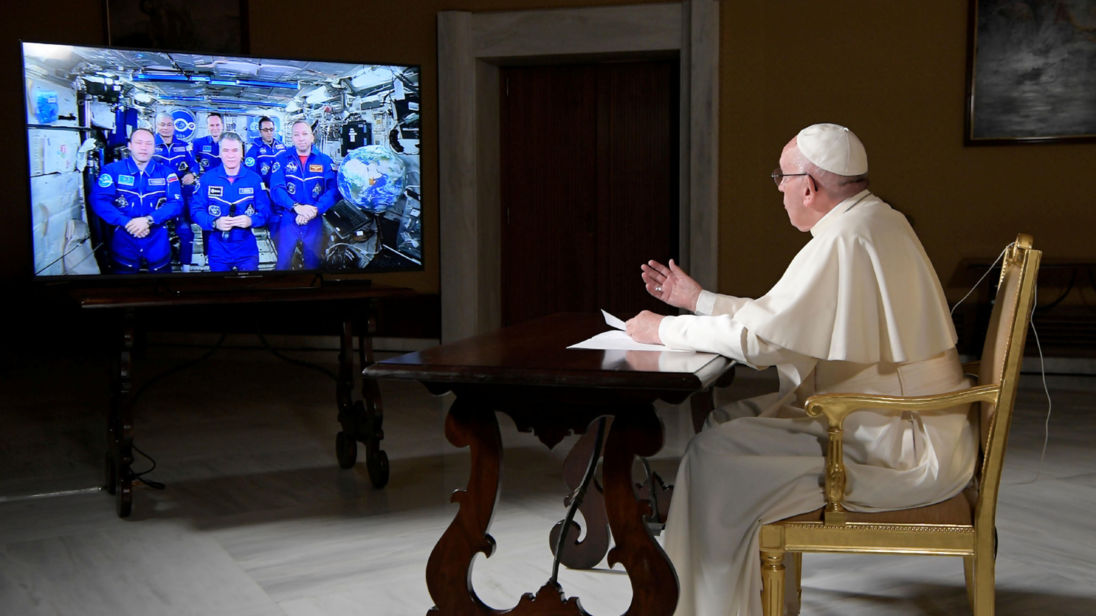Gravitational Waves: International Group of Scientists Reveal Extraordinary Breakthrough in Understanding the Cosmos
October 16, 2017For the first time in history, an international consortium of scientists, astronomers, and researchers collaborating on 7 continents have viewed the collision of two neutron stars––an event that occurred almost 130 million years ago.
They did so by detecting the elusive gravitational waves or ripples in spacetime that Albert Einstein first predicted almost a century ago when he published his famous theory of general relativity.

“Neutron stars are the smallest, densest stars known to exist and are formed when massive stars explode in supernovas. As these neutron stars spiraled together, they emitted gravitational waves that were detectable for about 100 seconds; when they collided, a flash of light in the form of gamma rays was emitted and seen on Earth about two seconds after the gravitational waves,” said a statement from LIGO. “In the days and weeks following the smashup, other forms of light, or electromagnetic radiation — including X-ray, ultraviolet, optical, infrared, and radio waves — were detected.”
The unprecedented effort to discover Einstein’s gravitational waves began nearly 30 years ago with funding from the National Science Foundation. In September of 2015, researchers from the Massachusetts Institute of Technology and the California Institute of Technology viewed a collision of two black holes using this new window into the universe. The event occurred 1.3 billion years ago and a second gravitational wave from a similar event was detected on Christmas day in December of 2015 and pointed to a collision of black holes almost 1.4 billion years ago.
The first two detections of gravitational waves by astrophysicists were made possible by the Laser Interferometer Gravitational-Wave Observatory or LIGO. The facilities are located in Livingston, Louisiana and Hanford, Washington. The experiment has opened a new window to the universe in the same was telescope astronomy and infrared astronomy has in the past. In fact, the primary researchers behind the project, led by world-renowned cosmologist Kip Thorne, has just been awarded the Nobel prize in Physics for the extraordinary breakthrough. The LIGO facilities are described as having the most sensitive scientific instruments ever built.
“Each observatory consists of two long tunnels arranged in an L shape, at the joint of which a laser beam is split in two. Light is sent down the length of each tunnel, then reflected back in the direction it came from by a suspended mirror,” said a LIGO press release. “In the absence of gravitational waves, the laser light in each tunnel should return to the location where the beams were split at precisely the same time. If a gravitational wave passes through the observatory, it will alter each laser beam’s arrival time, creating an almost imperceptible change in the observatory’s output signal.”
Gravitational waves emit from the Universe’s most extreme events and the ripples they cause only last a fraction of a second. However, the waves from the collision of two neutron stars lasted much longer. On August 17th, 2017 at 8:41 AM Easter, a gravitation wave was detected by Virgo facility in Italy and much less than a second later, the same wave was detected by the LIGO facility in Livingston, Louisiana. A moment after that, it was detected by the LIGO station in Hanford, Washington. The effort to detect these waves from millions of years ago, requires a global effort and the input from an array of scientific disciplines. To fully detect and understand the collision of two dense neutron stars, over 70 observatories around the world and 7 space-based telescopes were utilized in what will be remembered as a historic international effort in the pursuit of a watershed scientific discovery.
The neutron star collision was sourced to the Hydra constellation and confirmed a previous hypothesis about the formation of everyday elements in the cosmos. Neutron stars are formed following the explosion of a much larger star––called a supernova. What’s left are starts made up purely of neutrons and are extremely compact with sizes measuring 20-25 kilometers in diameter. So what did they find in the midst of this cosmic collision of two neutron stars? Gold and Uranian, among other elements.
What’s also special about this particular discovery is that scientists were also able to detect light through the emission of electromagnetic waves.
The researchers refer to both the gravitational and electromagnetic waves as “multiple messengers” that are helping to “transform our understanding of the universe.”
“Theorists have predicted that what follows the initial fireball is a “kilonova” — a phenomenon by which the material that is left over from the neutron star collision, which glows with light, is blown out of the immediate region and far out into space,” explained LIGO. “The new light-based observations show that heavy elements, such as lead and gold, are created in these collisions and subsequently distributed throughout the universe.”
This gravitational wave discovery of two neutron stars was the first time in human history that we witnessed and cataloged such an event. It required collaboration with gravitational wave research at Virgo––the European effort to detect the ripples. Virgo is a collaboration of astrophysicists working in laboratories in six nations: Italy and France (the two countries spearheading the research), along with the Netherlands, Poland, Hungary and Spain.
“It is tremendously exciting to experience a rare event that transforms our understanding of the workings of the universe,” says the director of the National Science Foundation, France A. Córdova. “This discovery realizes a long-standing goal many of us have had, that is, to simultaneously observe rare cosmic events using both traditional as well as gravitational-wave observatories. Only through NSF’s four-decade investment in gravitational-wave observatories, coupled with telescopes that observe from radio to gamma-ray wavelengths, are we able to expand our opportunities to detect new cosmic phenomena and piece together a fresh narrative of the physics of stars in their death throes.”
Featured Image: Cataclysmic Collision Artist’s illustration of two merging neutron stars. The rippling space-time grid represents gravitational waves that travel out from the collision, while the narrow beams show the bursts of gamma rays that are shot out just seconds after the gravitational waves. Swirling clouds of material ejected from the merging stars are also depicted. The clouds glow with visible and other wavelengths of light. Image credit: NSF/LIGO/Sonoma State University/A. Simonnet
 Robin Seemangal is a Space Reporter, with a focus on NASA and advocacy for space exploration for the New York Observer. He’s also written for Popular Science and Wired Magazine. He was born and raised in Brooklyn, where he currently resides. You can find him on Twitter and Instagram.
Robin Seemangal is a Space Reporter, with a focus on NASA and advocacy for space exploration for the New York Observer. He’s also written for Popular Science and Wired Magazine. He was born and raised in Brooklyn, where he currently resides. You can find him on Twitter and Instagram.









You should read the book: The Codes of God. The Alfa and the Omega. the Inception of Time itself and Mortal Life. It explains everything about the universe, how it works, what are those celestial bodies for in the Universe. The codes of creation read by the proper celestial softwares and more. It can be found at https://www.amazon.com/gp/aw/d/B072K96V73/ref=mp_s_a_1_1?ie=UTF8&qid=1508554056&sr=8-1&pi=AC_SX236_SY340_FMwebp_QL65&keywords=the+codes+of+god+the+alfa
You should read the book: The Codes of God. The Alfa and the Omega. the Inception of Time itself and Mortal Life. It explains everything about the universe, how it works, what are those celestial bodies for in the Universe. The codes of creation read by the proper celestial softwares and more. It can be found at http://www.Amazon.com
You shoul read the boom: The Condes of God. The Alfa and the Omega. the Inception of Time itself and Mortal Life. Ir explains everything about the universe, how ir works, what are those celestial bodies for un the Universe. The condes if creation read by the proper celestial software and more. Ir can be found at Amazon.com